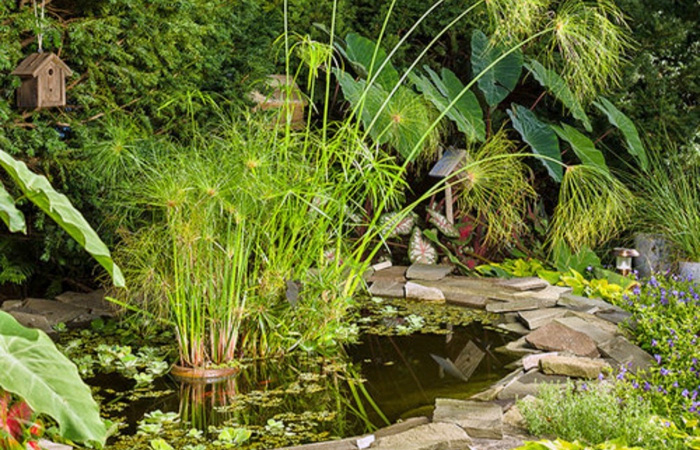So it turns out that there is this very famous pharaoh named Tutankhamen also nicknamed King Tut. When I started this blog I kept ignorantly searching King Tut thinking I would get the grass. But lo and behold there is a very famous pharaoh and his sarcophagus that rules the internet more than my little grass. Who would have thought? Anyway, after narrowing my search and being a little more specific with my plant names I found out some really cool things about my little friend King Tut, the grass this time though. First being that he isn’t a little friend, now I have always known King Tut grass gets big getting 4′- 6′ tall, but going back to King Tut’s old genes it can get anywhere from 15′ – 20′! That is HUGE! Can you imagine a 20 foot tall grass? I don’t think I have ever seen anything even close to that size within our Manitoban perennials and Annuals. For a reference the average Semi truck is 13.6 feet tall! So King Tut’s relatives have got a solid 2 – 7 feet on our highway giants! Just trying to imagine a grass that tall is mind blowing for me! And also what a dreamy plant, I would love to have a 20 foot tall giant grass in my backyard! It is also believed that these are the “reeds” that were used in the bible to make Moses baskets. Though we can’t know for certain, it’s a fairly educated guess seeing as these massive reeds would have been everywhere at the time (and possibly even today, unfortunately my knowledge of plants in Egypt are limited). Sadly like I said before, this is the original gene that is in Africa and Egypt, there is no way those will grow here. However we do have a hybrid that was created for us called the king tut grass. So let’s focus on what we can have rather than what we can’t.
King Tut grass, like I said before, is a tall grass that makes an excellent centrepiece or standalone plant for flower beds and containers. It offers a very unique and exotic look with its tall stems and green plumes on top. Believe it or not King Tut is the dwarf cultivar. An odd thing to think about given that the grass itself gets 4 – 6 feet tall! There are even dwarf varieties of this dwarf cultivar, the prince tut and the baby tut grasses. The names do indicate the sizes, King Tut is the biggest, Prince Tut is medium, and Baby Tut is the shortest, stopping its growth at only two feet tall at its peak. But we aren’t talking about the whole family today, we are talking about the King!
In warmer climates King Tut grass is an evergreen, in less warm climates going down to -1 it acts as a perennial, and in our climate it is an annual. Unfortunately with our -35 winters this delicate evergreen can’t handle the cold. That doesn’t mean we don’t get a good show though! King Tut grass grows fast and proud! Its tolerance to moisture makes it a favourite, since its genes originally come from a reed that can tolerate standing water, the King Tut grass can tolerate some heavy moisture. Obviously if it’s mixed with other plants keeping the water needs of the other plants in mind is very important, they may be less appreciative of the excess moisture. This also doesn’t mean that you need to water it every day, just that it is forgiving. Like most plants even moisture with a little dry out period between watering is always appreciated. King Tut Grass loves full sun but as a grass it can tolerate some deeper shade. Usually anywhere from 5 – 12 hours of sun a day is fine for king tut.
Its ancestors were also used to make paper, now I don’t know if you can actually make paper out of the king tut grass but it could be a fun family experiment. Another fun idea to try is planting your King Tut in water! Now I personally haven’t tried this and won’t fully endorse it since I don’t know the results, but my research does suggest that King Tut grass can be planted in standing water such as a pond. Now again I haven’t tested this out so I won’t promise it’ll work, but it could be fun to try and see if it’ll thrive in your pond!
I will also mention that if you have a dog that likes to eat every plant in existence you may want to avoid King Tut grass as it can make your dog sick. I always try to be aware of what plants are safe for pets and which ones aren’t. This would be one I would suggest avoiding, but only if your pet is known for eating plants. That aside, this is a wonderful plant with some very interesting relatives and history. With exotic features and a moisture tolerance that cannot be competed with, this is an annual that your planters and gardens will certainly benefit from. Next time you see this grass in the greenhouse I hope you can appreciate it a little more!




